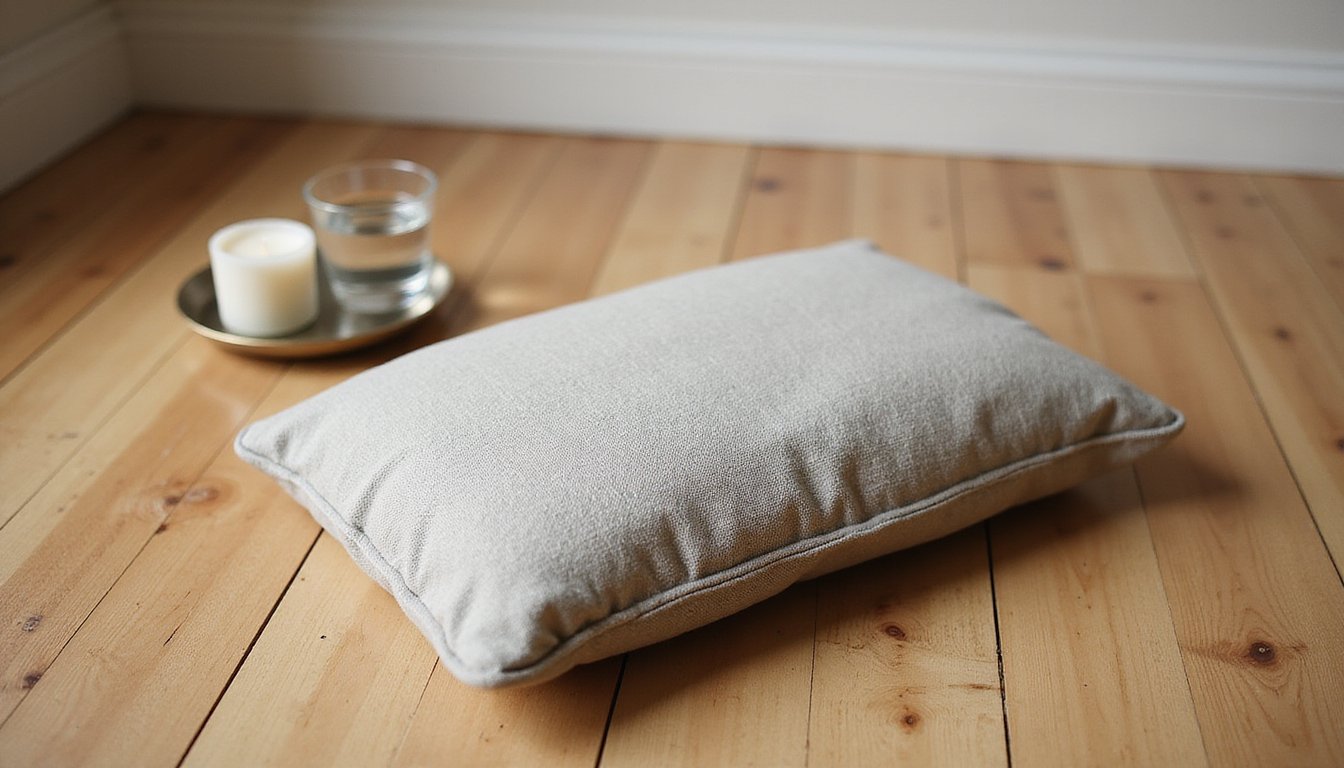You can effectively practice CBT on your own through evidence-based digital tools and structured self-help resources. Start by establishing a dedicated space and consistent routine for tracking thoughts, behaviors, and emotional patterns. Modern apps like MindDoc, Sanvello, and Woebot offer ideal features for guided exercises and progress monitoring. Combine these with relaxation techniques and journaling for best results. Understanding the complete framework of self-guided CBT will optimize your success in managing symptoms.
Understanding the Power of Self-Guided CBT

While traditional therapy remains a cornerstone of mental health treatment, self-guided Cognitive Behavioral Therapy (CBT) has emerged as a powerful and scientifically validated intervention. Research demonstrates that self-guided CBT can markedly reduce symptoms across multiple conditions, including panic disorder, OCD, and binge eating disorder, with results comparable to in-person treatment. Virtual reality applications like ZeroPhobia have shown significant anxiety reduction even without therapist involvement. Recent evidence confirms that therapist-guided remote CBT is just as effective as in-person CBT for treating various conditions. You’ll find particular success with digital platforms that incorporate customized guidance strategies and user engagement techniques. These programs offer interactive exercises, monitoring tools, and structured psychoeducation that you can complete at your own pace. The evidence is compelling: 27% of individuals with OCD achieve clinically significant improvement post-treatment, increasing to 38% at three-month follow-up. When supported by minimal practitioner contact, such as email check-ins, your chances of achieving meaningful recovery increase substantially. A comprehensive approach typically includes weekly telephone sessions to ensure proper engagement and progress with the treatment program.
Essential Tools and Resources for Your CBT Journey
Modern CBT apps offer you thorough tracking features and evidence-based exercises, with popular options like Woebot and MoodKit providing guided sessions and mood monitoring capabilities. You’ll find that digital progress tracking through these apps allows for detailed documentation of your thoughts, behaviors, and emotional patterns over time, often with built-in analytics and visualization tools. A comprehensive 90-page workbook is available as a free PDF download to support your self-help journey. Learning to use assertive communication through these apps can help you express your needs and feelings more effectively. Comparing different CBT apps based on their specific features, user interface, and clinical validation can help you select the most appropriate tool for your therapeutic needs. For additional learning support, you can access expert clinical tips through multimedia resources featuring experienced CBT practitioners.
Digital CBT Apps Compared
As digital mental health solutions continue to evolve, CBT apps have emerged as powerful tools for implementing therapeutic techniques in daily life. Leading platforms like MindDoc and Sanvello offer extensive app customization options, allowing you to tailor your therapeutic journey through interactive modules, guided meditations, and journaling features. Many apps provide 24/7 accessibility for immediate therapeutic support whenever needed. Happify stands out by making mental wellness engaging through CBT-based games and activities. Woebot provides an innovative approach with its AI chatbot that teaches self-care skills and acts as a life coach.
Several apps integrate professional guidance integration, with Sanvello and MindDoc providing access to therapists for additional support. You’ll find specialized solutions targeting specific needs: MindShift for anxiety, Inflow for ADHD, and CBT-i Coach for sleep issues. While some apps are free, like CBT-i Coach and MindShift, others require subscriptions ranging from $4.49 to $14.99 monthly. Most platforms offer evidence-based frameworks, combining self-paced learning with structured courses and daily check-ins to support your progress.
Tracking Progress Methods
Building upon digital solutions, systematic progress tracking forms the backbone of successful CBT treatment. You’ll need to implement integrated patient reporting through standardized measures like GAD-7 for anxiety and HAM-D for depression, combined with consistent self-monitoring practices. Despite their proven benefits, routine monitoring remains underutilized in clinical settings.
Maintain a therapy journal to document your emotional patterns, coping strategies, and specific behavioral changes. Track symptom trend analysis by recording the frequency of target behaviors and your responses to diverse interventions. Research demonstrates that better outcomes result when individuals actively monitor and receive feedback on their progress. Modern mental health apps enable convenient documentation and pattern recognition through visual data representation. Set SMART goals and establish clear baseline measurements to gauge your advancement over time.
Use available technology to amplify your tracking efforts, including telehealth systems and electronic worksheets. Regular review of your documented progress helps identify effective strategies, adjust treatment approaches, and sustain motivation throughout your CBT expedition.
Setting Up Your Personal CBT Practice

Your personal CBT practice begins with establishing a dedicated, distraction-free space equipped with evidence-based tools such as thought records, journals, and structured worksheets. You’ll want to maintain consistent daily tracking of your thoughts, behaviors, and progress using these validated CBT instruments to measure improvements and identify patterns. Setting aside time for relaxation techniques and journaling can help build emotional regulation skills. Breaking down your self-help CBT journey into manageable steps will make the process less overwhelming. Recognizing and examining the evidence for thoughts helps you develop more balanced perspectives. By implementing proven CBT techniques within your designated environment and documenting your expedition systematically, you’re creating the foundation for meaningful cognitive and behavioral change.
Create Your CBT Space
Creating an effective CBT space requires thoughtful preparation and strategic organization of both physical and mental resources. You’ll need to establish a comfortable desk setup with a supportive chair and adequate writing surface, while ensuring a calming lighting environment that won’t strain your eyes or create unwanted glare.
| Essential Elements | Implementation Tips |
|---|---|
| Physical Space | Quiet, clutter-free area with minimal distractions |
| Lighting | Natural or soft artificial light that reduces eye strain |
| Equipment | Supportive chair, stable desk, and writing surface |
| Materials | Journals, worksheets, pens, and mindfulness tools |
Position your CBT materials within easy reach to maintain session flow and momentum. Silence your electronic devices and organize your resources systematically. By creating this dedicated therapeutic environment, you’ll markedly bolster your ability to engage in productive CBT work and maintain consistent practice routines.
Track Daily Progress
To establish an effective CBT practice, systematic progress tracking serves as a cornerstone for measuring therapeutic outcomes and maintaining accountability. Start by documenting your baseline symptoms using standardized assessments and setting specific, measurable goals. Implement daily goal setting through user-friendly monitoring tools like mood logs, apps, or journals to record thoughts, emotions, and behaviors.
Track your symptoms’ frequency and severity, noting triggers and contextual factors. You’ll need effective troubleshooting strategies to maintain consistent monitoring, if one method isn’t working, try alternative formats or simplified versions. Review your data weekly to identify patterns and adjust your approach accordingly. Remember to celebrate documented improvements, using these achievements as motivation to maintain your tracking routine. Compare your progress against initial baselines to evaluate your CBT intervention’s effectiveness.
Choose Evidence-Based Tools
Selecting evidence-based CBT tools forms the foundation of an effective self-guided practice. Prioritize customized worksheet creation by choosing validated resources that target your specific challenges. Focus on ongoing skill development through structured tools that have demonstrated clinical effectiveness.
| Tool Type | Implementation Strategy |
|---|---|
| Thought Records | Track and analyze cognitive distortions daily |
| Problem-Solving Templates | Break challenges into actionable steps |
| Values Clarification Forms | Align decisions with personal priorities |
| Progress Tracking Sheets | Monitor symptom changes systematically |
Leverage digital CBT platforms that offer interactive modules and immediate feedback. Incorporate standardized assessment scales to measure your progress objectively. When selecting tools, make sure they’re backed by research and designed to support independent practice. Combine core CBT techniques like cognitive restructuring with behavioral experiments to build an all-inclusive self-help toolkit.
Mastering Core CBT Techniques

While mastering Cognitive Behavioral Therapy requires dedication, understanding its core techniques enables practitioners to effectively address diverse psychological challenges. Start by practicing cognitive restructuring, where you’ll learn to identify and challenge irrational thoughts using thought records and reframing exercises. You’ll document situations, emotions, and evidence that supports or contradicts your automatic thoughts.
Complement this approach with behavioral experiments to test your predictions against real outcomes. You’ll systematically face feared situations through exposure work while tracking your responses. Use self-monitoring tools to record daily thoughts, triggers, and behaviors, providing data for analysis. Incorporate relaxation techniques like diaphragmatic breathing and mindfulness practices to manage physiological arousal. These foundational skills, when practiced consistently, lead to improved emotional regulation and cognitive flexibility.
Tracking Progress and Measuring Success
Progress tracking forms a cornerstone of successful Cognitive Behavioral Therapy, building upon the mastery of core techniques through systematic measurement and evaluation.
Your success depends on implementing effective goal-setting strategies that are specific, behavioral, and time-bound. Start by establishing clear, measurable targets and utilize standardized assessment tools to monitor your expedition objectively. Track your behavioral and emotional changes through daily journaling or apps, which enables data driven decision making about your therapeutic approach.
Schedule regular progress reviews to reflect on your achievements and challenges. Compare your current state to your starting point, and don’t hesitate to adjust your techniques based on the feedback your tracking provides. By maintaining consistent measurement and responding to the data, you’ll optimize your CBT outcomes and maintain steady progress in the direction of your goals.
Overcoming Common Challenges in Self-Directed CBT
Self-directed CBT presents five essential challenges that require strategic navigation for ideal therapeutic outcomes. You’ll need specific strategies for sustaining motivation and discipline, as progress often feels gradual and emotions typically lag behind cognitive changes. Set realistic expectations about setbacks and establish structured routines with clear schedules to improve adherence.
When identifying cognitive distortions without professional guidance, you might struggle with proper technique application or miss pivotal therapeutic steps. Combat this by accessing reliable educational resources and validated CBT apps. Be mindful that heightened awareness of negative thoughts may feel overwhelming initially, but this is a normal part of the process. Recognize that severe symptoms, particularly suicidal thoughts, require professional intervention; self-directed CBT has limitations that you must acknowledge for your safety and well-being.
Building a Support System for Your CBT Practice
Success in self-directed CBT largely depends on establishing a strong support network that combines accountability partnerships, professional guidance, and community resources. Start by finding trusted individuals who’ll serve as your CBT accountability partners, scheduling regular check-ins to review your progress and maintain consistency. Sharing CBT experiences in structured peer support groups can reduce isolation while increasing your motivation and adherence to techniques.
When facing complex challenges, don’t hesitate to consult licensed professionals who can provide expert guidance. You’ll benefit from connecting with community mental health programs and self-help groups that offer supplementary resources and shared learning opportunities. Create a supportive environment by designating a specific space for CBT practice and using reminder systems. Research shows that combined support from professionals and informal networks can improve your success rates by up to 20%.
Incorporating Digital Tools and Apps Effectively
Digital CBT tools and apps represent a powerful extension of traditional therapeutic approaches, offering evidence-based interventions with documented effectiveness rates comparable to face-to-face sessions. You’ll find these platforms equipped with interactive workbooks, structured modules, and progress tracking features that closely mirror therapist-led experiences.
For optimizing personalization, select apps that offer customizable reminders, self-assessment tools, and adaptive difficulty levels based on your progress. Focus on promoting user engagement by utilizing features like mood tracking, behavioral experiments, and integration with wearables. You’ll achieve better results by maintaining consistent practice through the app’s built-in accountability measures and optional human support components.
Remember to choose platforms that match your technological comfort level and provide the flexibility to practice CBT techniques at your preferred pace and location.
When to Seek Professional Guidance
The decision to seek professional CBT guidance hinges on recognizing specific warning signs and clinical thresholds. When identifying self-care needs, you’ll need professional help if you experience persistent suicidal thoughts, severe depression, panic attacks, or psychosis. You should also consult a therapist if you’re unable to perform daily activities or maintain relationships.
Assessing symptom severity is indispensable; if you notice no improvement after weeks of self-guided CBT, or if your symptoms worsen, it’s time to seek expert support. You’ll particularly benefit from professional guidance when dealing with complex conditions like PTSD, eating disorders, or dual diagnoses. In addition, if you’re struggling to set realistic therapy goals, complete homework assignments, or maintain motivation, a licensed therapist can provide the structured support and accountability you need.
Frequently Asked Questions
Can CBT Help With Specific Phobias Like Fear of Flying?
Yes, CBT is highly effective for treating fear of flying, with success rates over 90% across different approaches. You’ll learn essential symptom management techniques like controlled breathing and thought restructuring. Through exposure therapy, you’ll gradually face flying-related situations in a systematic way. Whether you choose traditional CBT, virtual reality exposure, or EMDR integration, research shows these skills help maintain reduced anxiety levels even years after treatment completion.
How Long Should I Practice CBT Exercises Each Day?
You’ll get the most benefit from practicing CBT exercises for 15-30 minutes daily. The ideal time commitment is consistent, shorter sessions rather than lengthy, sporadic ones. While the suitable session duration can vary based on your specific needs, start with 15 minutes and gradually increase if needed. Remember, it’s not about marathon sessions; what matters most is your daily dedication to the practice. Track your progress to maintain accountability and effectiveness.
Should I Tell My Family Members I’m Doing Self-Guided CBT?
Deciding to share your personal adventure with CBT is entirely your choice; there’s no clinical requirement to inform family members. If you have a supportive family environment, discussing your CBT practice could boost accountability and provide valuable emotional support. However, if you anticipate negative family reactions or prefer privacy, it’s perfectly acceptable to keep your therapeutic work to yourself until you feel ready to share your advancement.
Can I Combine CBT With Other Forms of Therapy or Meditation?
Yes, you can effectively combine CBT with other therapeutic approaches. Combining CBT with mindfulness practices can improve your emotional regulation and reduce rumination. You’ll find that integrating CBT with journaling strengthens your self-reflection and reinforces cognitive restructuring. Research supports these combinations, particularly for managing anxiety and depression. Start slowly by adding one complementary practice at a time, and monitor how these combinations affect your progress and emotional well-being.
What Age Is Appropriate to Start Self-Guided CBT?
The minimum recommended age for self-guided CBT is 8 years old, as this is when children typically develop the cognitive abilities needed for independent practice. However, if you’re working with children in the appropriate age range of 3-7, you’ll need to guarantee constant parental supervision and use play-based modifications. For ideal outcomes, you should adapt the techniques according to developmental readiness and consider professional guidance when starting CBT with younger children.





